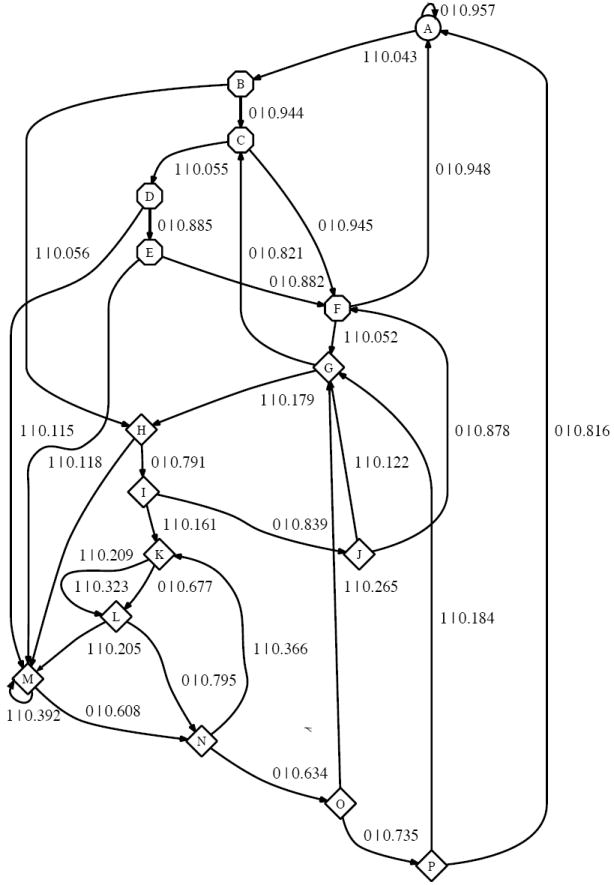FIG. 4.

16-state CSM reconstructed from 200 sec of simulation of periodically-stimulated spiking. C = 0.89, J = 0.27, R = 0.0007. State A is the baseline state. States B through F (octagons) are “decision” states in which the CSM evaluates whether a spike indicates a stimulus or was spontaneous. Two spikes within 3 msec cause the CSM to transition to states G through P, which represent the structure imposed by the stimulus. If no spikes are emitted within 5 (often fewer) sequential msec, the CSM goes back to the baseline state A.
